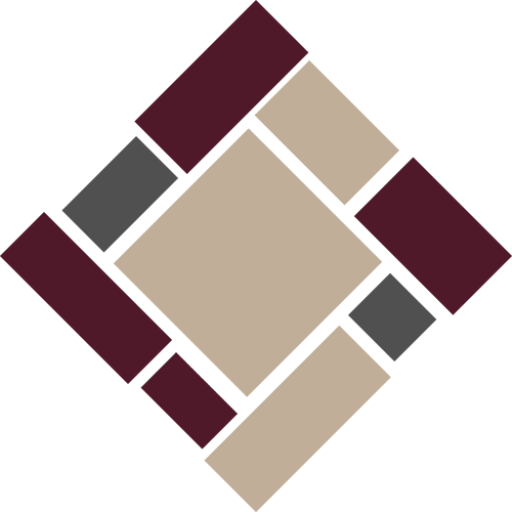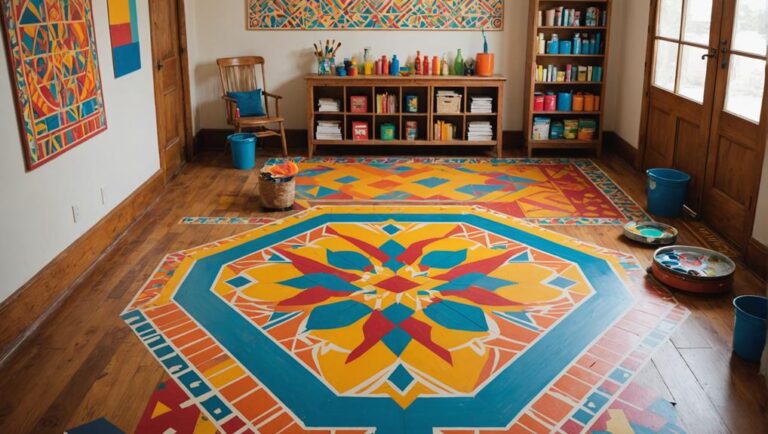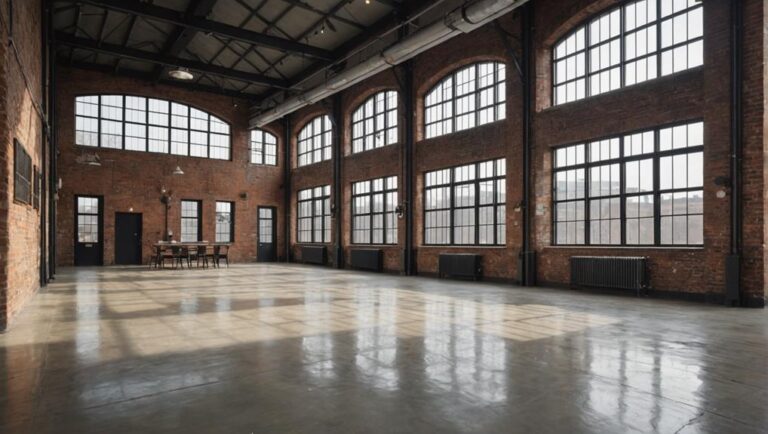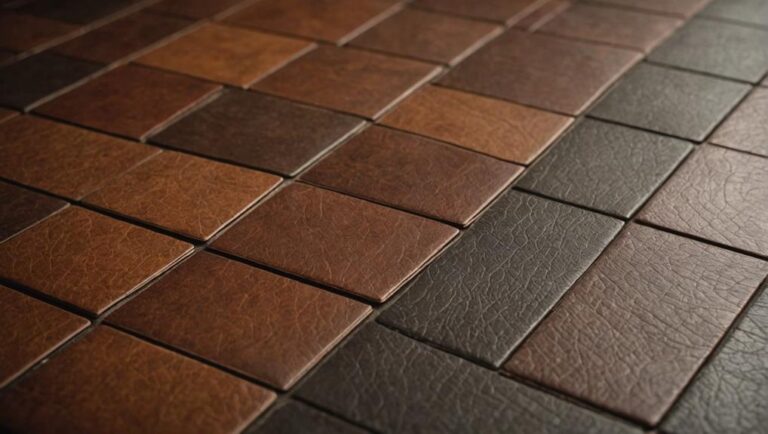To strip old floor wax and refinish effectively, start by inspecting your floor for damage and identifying any previous wax applications. Gather necessary tools, including a floor stripper, scrub brush, mop, and safety gear like gloves and goggles. Apply the stripper in small sections, agitating stubborn wax with the brush as needed. Once stripped, guarantee proper ventilation and check for imperfections. Protect surrounding areas before applying your new finish—choose oil-based or water-based options based on durability needs. Follow up with thin, even coats and allow adequate drying time. You'll find more valuable tips as you explore further.
Assessing Your Floor Condition
Before you begin stripping old floor wax, it's important to assess your floor condition, as this will determine the best approach for the task. Different floor types—whether hardwood, vinyl, tile, or linoleum—react differently to wax removal methods. Start by inspecting the surface for any visible damage. Look for scratches, dents, or warping in hardwood floors, and check for peeling or discoloration in vinyl and linoleum. Tile floors may show grout deterioration or loose tiles that need attention before any wax removal.
Next, conduct a simple test to evaluate the current wax condition. You can do this by applying a few drops of water on the floor; if the water beads up, the wax is still intact. If it absorbs, you may need to take into account additional cleaning before proceeding with wax removal. Be sure to note any areas that may require special attention or repair.
Look for signs of previous wax applications. If the floor has been waxed multiple times, buildup may have occurred, necessitating a more intense removal method. It's vital to keep safety in mind; if you're dealing with older floor types, such as those installed before the 1980s, verify you test for lead-based finishes before proceeding.
Lastly, check the manufacturer's recommendations for your specific floor type. This can provide you with the best guidance on the appropriate wax removal techniques and products to use, assuring a safe and effective process.
Gathering Necessary Tools
To kick off the process of stripping old floor wax, you'll need to gather the right tools and materials to secure a smooth and effective operation. Having the proper equipment is vital for implementing effective wax removal techniques and making certain your floors are protected throughout the process. Below is a list of essential tools you'll need:
| Tool/Material | Purpose |
|---|---|
| Floor stripper | To remove old wax safely and efficiently |
| Scrub brush | For scrubbing stubborn wax residues |
| Mop | To clean up excess stripper and debris |
| Buckets | To mix cleaning solutions and rinse |
Additionally, consider investing in floor protection methods, such as drop cloths or plastic sheeting, to safeguard adjacent surfaces from any drips or spills. Always use safety gear, including gloves and goggles, to protect yourself from harsh chemicals in the wax stripper.
When selecting a floor stripper, verify it's compatible with your floor type to avoid damage. Read the manufacturer's instructions carefully to understand the proper use and safety precautions. It's also wise to ventilate the area adequately while working, as fumes can be potent.
Stripping Old Floor Wax
With your tools and materials at the ready, it's time to start stripping the old floor wax. Begin by selecting the appropriate chemical options based on your floor type, whether hardwood, laminate, or tile. Always opt for a product that's specifically designed for your floor to minimize damage and guarantee effectiveness.
Before applying any chemical stripper, put on safety goggles, gloves, and a mask to protect yourself from harmful fumes and skin contact. Confirm the area is well-ventilated by opening windows or using fans. Following the manufacturer's instructions, apply the stripper using a mop or cloth, focusing on small sections at a time. Avoid using excessive amounts; a thin, even layer works best.
After allowing the stripper to sit for the recommended time, use a scrub brush or pad to agitate the wax. For tougher spots, you might need to reapply the chemical or use a more aggressive technique. Once the wax is lifted, wipe the area with clean water to remove any residue. This step is essential as it minimizes the environmental impact of the chemicals used.
As you work, keep an eye on your floor's condition. Some floor types may require additional care or different application techniques, so adjust your approach accordingly. After successfully stripping the wax, remember to follow maintenance tips specific to your floor type to keep it in good condition for future refinishing.
Preparing for Refinishing
Proper preparation is essential for a successful refinishing project. Begin by verifying the workspace is well-ventilated. Open windows and doors to allow fresh air in, and consider using fans to promote airflow. Next, gather your cleaning supplies and tools. You'll need a vacuum cleaner, microfiber cloths, and a gentle floor cleaner to remove any dust and debris from the floor. Employ effective cleaning techniques; start with vacuuming to eliminate loose particles, followed by mopping the surface with a damp cloth. Avoid using excessive water, as it can damage wooden floors.
Once cleaned, inspect the surface for any imperfections like scratches or dents. Address these issues before moving on. To protect the surrounding areas, lay down drop cloths or plastic sheeting. This guarantees that dust, debris, and potential spills don't compromise your walls or furnishings. Remember to tape off any baseboards or trim to provide additional surface protection.
If you're dealing with any sharp or jagged edges, it's wise to wear gloves to protect your hands. A dust mask is also recommended to avoid inhaling any particles during the sanding phase that may follow. By taking these precautions, you'll create a safer and more efficient environment for refinishing. Finally, verify that all materials, such as stain or sealants, are properly stored and out of reach of children or pets. Following these steps will set you up for a successful refinishing job.
Applying New Finish
Applying a new finish to your floor is an important step in the refinishing process, as it can dramatically enhance the wood's appearance and longevity. Before you start, make sure the room is well-ventilated, and you're wearing appropriate personal protective equipment, such as gloves and a mask.
Choosing the right finish is vital. You can opt for oil-based or water-based finishes. Oil-based finishes tend to provide a richer color and are more durable, while water-based finishes dry faster and have lower VOC emissions. Read the manufacturer's instructions carefully, as different products may require specific application techniques.
When you're ready to apply the finish, use a high-quality applicator, like a lambswool pad or a synthetic brush, for an even coat. Begin in a corner of the room and work your way toward the exit to avoid stepping on wet finish. Apply the finish in thin, even layers, following the wood grain to achieve a smooth application. Avoid overloading the applicator, as this can cause drips and uneven patches.
Once the first coat is applied, allow it to dry according to the product instructions—usually around 2 to 4 hours for water-based and up to 24 hours for oil-based finishes. After drying, lightly sand the surface with fine-grit sandpaper to guarantee proper adhesion of subsequent layers. Clean the dust thoroughly before applying additional coats. Generally, two to three coats will yield the best results, providing a durable and aesthetically pleasing finish.
Frequently Asked Questions
How Often Should I Strip and Refinish My Floors?
You should strip and refinish your floors every 3 to 5 years, depending on traffic and wear. Regular maintenance tips include sweeping and mopping to prevent buildup, which can prolong the finish's life. If you notice dullness or scratches, it might be time to contemplate refinishing sooner. Always follow frequency recommendations specific to your flooring type to guarantee safety and maintain the aesthetics of your space effectively.
Can I Strip Wax From Laminate Floors?
Imagine your laminate floors glistening like a calm lake at dawn. When it comes to wax removal, you can't just plunge in headfirst. Stripping wax from laminate isn't recommended, as it can damage the surface. Instead, focus on laminate care by using a damp cloth and a gentle cleaner specifically designed for laminate. This method guarantees your floors stay safe and beautiful without compromising their integrity. Regular maintenance will keep them looking fresh for years.
What Are the Signs That My Floor Needs Refinishing?
You'll know your floor needs refinishing when you start noticing scratches and a dull appearance. If the surface feels rough underfoot or dirt accumulates easily, those are clear signs it's crucial to act. Additionally, if water stains linger or the finish wears unevenly, it's essential to act. Regular inspections and addressing these signs promptly can help maintain your floor's integrity and safety, ensuring a beautiful space for years to come.
Is It Safe to Strip Wax Indoors?
Stripping wax indoors can be safe, but you need to prioritize indoor ventilation and chemical safety. Make certain windows are open and use fans to promote airflow, reducing fume buildup. Always check the safety data sheets for the chemicals you're using; some may emit harmful vapors. Wear appropriate protective gear, like gloves and masks, to minimize exposure. If ventilation isn't adequate, consider postponing the task or opting for a less harmful alternative.
How Long Does the Entire Process Take?
The entire process typically takes several hours to a couple of days, depending on your preparation steps and the size of the area. You'll need to allocate time for evaluating the floor, gathering materials, and applying the stripping solution. After stripping, allow adequate drying time before refinishing. A good time estimate for everything, including drying, is around 24 to 48 hours, ensuring you prioritize safety throughout each phase.



